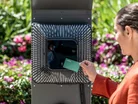Why is EV bi-directional charging key for energy efficiency?

Digital technology has now advanced to a point where electric vehicles (EVs) can recirculate back into your home and other electrical products. But, why is it no surprise that vehicles now have this capability and why is it a critical step in managing energy consumption?
The International Energy Agency’s Global Energy Review shows that energy demand is increasing and electricity is becoming more expensive. In China alone, the figure for electricity demand increased by 10% in 2021 to reach an equivalent to the whole of Africa. Also, with the effects of the Russia-Ukraine crisis, the effects have been spreading west as fossil fuel plants reopened to bridge the gap in preparation for the winter.
Expecting a rise in prices to continue, consumers are going to be hit with the highest energy bills they’ve ever seen and, while renewable energy is critical to save the planet, the costs aren’t helping the case for sustainability. With the adoption of bi-directional charging is a great characteristic of EVs that will allow consumers to manage their energy needs in their home ecosystems.
What is bi-directional charging?
It’s no surprise that, similar to phones, cars are capable of sharing their charge. We’ve already seen these capabilities in other digital devices, and cars share a likeness to them as they advance in technology. Bi-directional charging allows the vehicle to redirect its power to inject energy back into a house or to charge smaller transport options, such as scooters and e-bikes.
This functionality allows consumers to operate their homes and digital devices as an ecosystem, meaning that leftover charge from the car can be directed back into their homes during peak times and alleviate the need for excessive energy consumption.
Solutions like Wallbox are making energy management more intuitive for EV drivers and encouraging the switch, but also ensuring that overconsumption is kept to a minimum. Over the lifetime of an electric vehicle, bi-directional charging could save owners around US$10,000.
Will bi-directional charging create microgrids?
If coupled with microsolutions for renewable energy, bi-directional charging could contribute to a microgrid-style solution. It’s only a matter of time before cloud solutions are in place for consumers to manage their personal energy acquisition, transmission and consumption. Electrification differs from fossil fuel power beyond its low-emissions benefits, as it enables a critical platform for connectivity between car, home and other digital devices.
About Wallbox
Compatible with EVs from some of the major automotive brands, Wallbox is a modular solution to digitally-enabled charging with bi-directional capabilities, allowing consumers to manage their energy and save. The Wallbox can be used with vehicles from brands like Porsche, Hyundai, Tesla, Audi and Cupra to share energy from car to vehicle and vehicle to car, leveraging a solution that distributes energy to the most necessary parts of your life.
- Voltpost Secures Grants for Nationwide Lamppost EV ChargersCharging & Infrastructure
- San Francisco Expands Curbside EV Charging ProgrammeCharging & Infrastructure
- How Amazon hit one Billion Electric Deliveries in the USFleet & Commercial
- Antimony Crisis: Challenges & Opportunities for EVsTechnology



